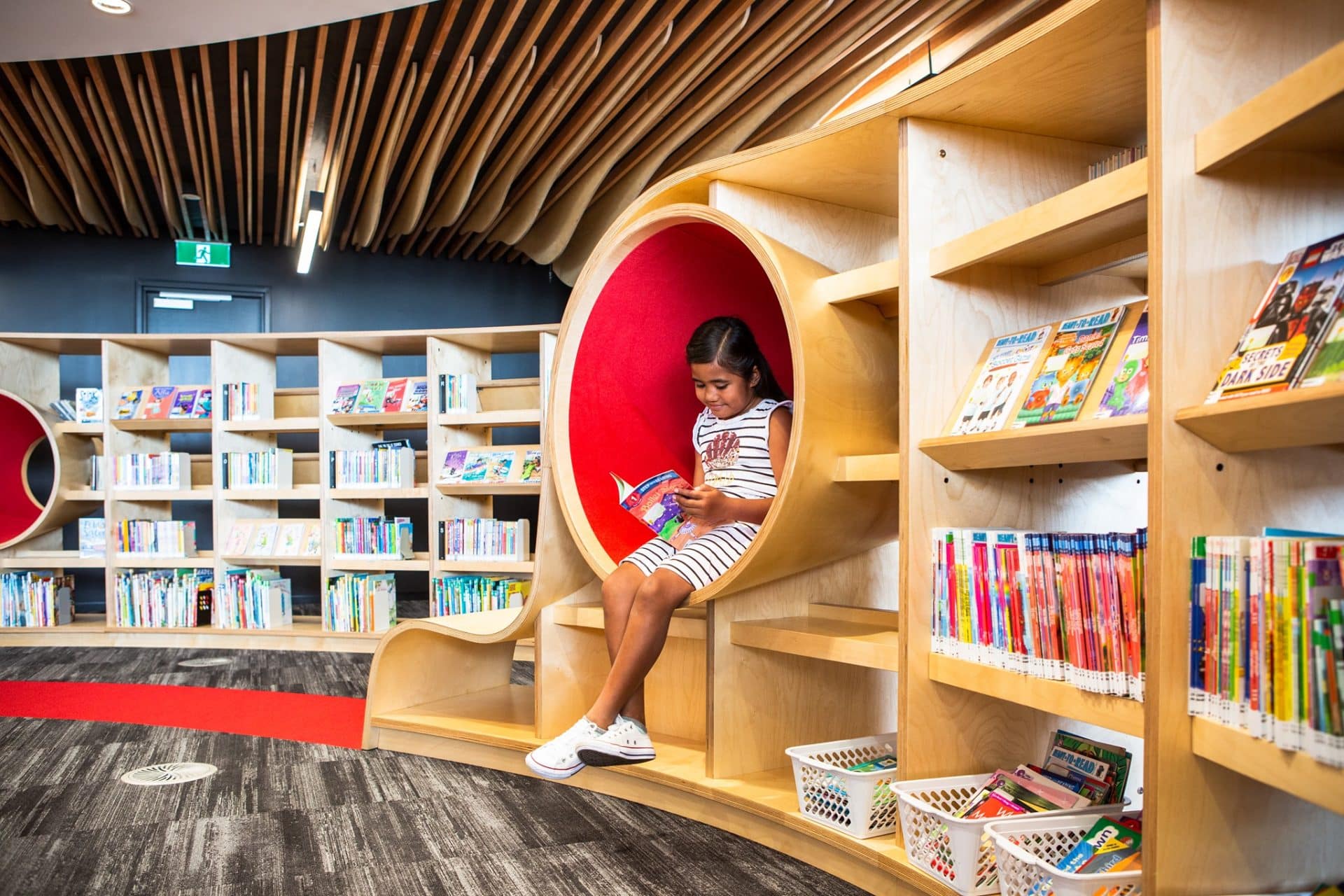The more that you read, the more things you will know. The more that you learn, the more places you’ll go.
– Dr. Seuss
Building a Reading Foundation
Building a solid reading foundation for children is an essential task that sets the stage for their future learning and development. It’s much more than simply teaching a child how to recognise letters and words. It’s about instilling a love for the written word and nurturing an unquenchable thirst for knowledge. It still amazes me how, in the early years, a child’s initial ability to talk comes nearly totally from listening and observing the people around them converse with each other. Reading opens up another world again!
Before children can transition to reading dense books or graphic novels, they need to be comfortable with reading basics. This involves understanding the alphabet, recognising words, and gradually cultivating reading fluency. However, these skills should be developed naturally over time and not rushed. It’s essential for children to love the process of reading rather than see it as a chore or a task.
Building a reading foundation starts with exposure to books from a young age. Read to your children, even if they cannot understand the words yet. Storybooks with colourful illustrations and simple words are excellent choices for younger audiences. Fairy tales, nursery rhymes, and books about animals or adventurous themes can all stimulate a child’s imagination and instinctive love of stories.
We read to both our kids while they were still in the womb. Yes, some while argue they didn’t know this – but I feel hearing the melodic and rhythmic pattern of our voices installed something in them. Certainly, every night while they were young, they would be read too, and even now, while they often prefer to read their own books, a semi-regular ritual is still to snuggle together on the couch or bed and read one of their all-time favourites!
Another crucial aspect of this phase is developing a child’s vocabulary. A rich vocabulary can significantly improve a child’s reading comprehension, enabling them to enjoy more complex stories in the future. Encourage children to articulate their thoughts and feelings and ask questions. This provides an opportunity to introduce new words and ideas, enhancing their language and cognitive skills.
Children who read for pleasure have higher levels of academic achievement.

Making Reading Fun
Lastly, it’s vital to ensure children comprehend and engage with the stories they read or listen to. Ask them to recount the stories in their own words or invite them to predict what might happen next. This encourages critical thinking and reinforces retention, both crucial aspects of reading comprehension.
Instilling a love for reading into a child can often be challenging, especially in a world heavily inclined towards digital screens. It is important to note that the goal is not just to get children to read but to enjoy it. This is crucial if they are to make reading a lifelong habit. Below are some strategies to make reading a pleasurable experience for children:
Interactive Storytelling
Children are naturally drawn to stories, and presenting reading as an engaging activity rather than a chore makes them more likely to participate actively. Encourage your child to enact scenes, use different voices for characters, or include props while reading. This kind of involvement ignites creativity and helps them understand the story better.
I enjoy reading to my kids but prefer it when it’s just me and them around. To be blunt – I get a little embarrassed putting on the number of voices I otherwise would if there is another adult about. If it is just me and the kids? It’s on! High voices, low voices – it’s my challenge to make the kids laugh as much as possible while reading the books. There is the little dad factor aspect of also seeing how much I can annoy the kids with goofy voices – “Just use your normal voice, dad!”
Create a Cosy Reading Nook
Creating a unique, comfortable space dedicated to reading can make the activity more appealing. It could be a corner with soft cushions, their favourite toys, and books! This cosy nook serves as their little escape to the world of stories.
My eldest daughter has created her own little space with blankets, pillows, and stuffed toys. The younger one likes to huddle in her bunk bed with the duvet over her.
Personalised Books
Stories in which children are the main characters can be a great hook. Plenty of such books can be personalised with the child’s name, making them part of the story. A personalised book captures a child’s interest and makes them feel special, pushing them to read more.
I grew up with such a book myself – which I still have – and the kids ask me to read to them semi-regularly.
Reading Games
Turning reading into a game can be incredibly effective. For example, play a treasure hunt, where the clues are hidden within the pages of a book. Or initiate a reading race where they earn points for each finished book. Such games can make reading an exciting pursuit.
Choose Books with Engaging Pictures
Children are significantly more drawn to books filled with colourful and vibrant illustrations. This is particularly true for younger children who can’t read yet. Pictures help them understand the story, keep them interested, and play a fundamental role in learning. This led us to Graphic Novels.
A book is a dream that you hold in your hand.
https://www.neilgaiman.com/
– Neil Gaiman

The Power of Graphic Novels
Graphic novels can be a stepping stone to introduce children to more significant, more dense books. The visual format of graphic novels, combined with illustrations and text, can make the reading experience more accessible and engaging for children. Children can become familiar with the storytelling elements and narrative structure of longer books by starting with graphic novels, preparing them for more complex reading material.
For children who may be intimidated by the length or density of traditional books, graphic novels can serve as a bridge. Visual storytelling in graphic novels helps to break down the text into manageable chunks, making it easier for children to follow the story and understand the content. This can build their confidence and motivation to explore longer, more challenging books.
Graphic novels often feature compelling characters and exciting storylines that can captivate children’s interest. The combination of visuals and text allows children to immerse themselves in the story and connect with the characters on a deeper level. This emotional engagement can create a positive reading experience and encourage children to seek similar experiences in more significant, dense books.

Additionally, graphic novels can introduce children to different genres and styles of literature. They come in various subjects, from fantasy and science fiction to historical events and biographies. By exploring multiple genres through graphic novels, children can develop their reading preferences and expand their literary horizons, making them more open to exploring bigger and denser books in the future.
My girls both already have their favourite series of books. The Babysitters Club features heavily here!
Finding the Right Books
Finding the right books for children can significantly influence their interest in reading. Parents should not muddle through the process of book selection randomly. Instead, it requires careful consideration and a thoughtful approach. Fortunately, there are various tactics parents and guardians can employ to ensure the books they choose will inspire their children’s reading habits.
Choosing books for your little ones shouldn’t be a haphazard process—try to read them beforehand! I can’t tell you the number of times I’ve come across books that, on the surface, seemed perfectly harmless. But as I delved deeper, I found storylines, themes, or concepts that didn’t align with the values or lessons I was trying to impart to my children—needless to say, this wasn’t the content I wanted to expose them to. Remember, folks—kids are like sponges at this tender age. Whatever they read seeps into their budding minds! So, make sure it’s something worthwhile and enriching.
Firstly, age-appropriateness is paramount when it comes to book selection. There’s no point in introducing children to books beyond their comprehension level. For the little ones just beginning to read, select books with simple words and narratives rooted in the themes they understand.
- For pre-schoolers: Books with bright illustrations and simple repetitive text can be an excellent start.
- For early readers: Short stories with basic vocabulary and engaging characters will keep them interested.
- For older children: Choose chapter books that delve deeper into various themes, featuring more complex narratives and character developments.
Next, it is beneficial to match books with your child’s interests. For a child obsessed with outer space, a graphic novel about planets can awaken an eagerness to read. For animal-loving kids, books about wildlife can be pretty engaging. Tailoring book selection to children’s interests increases the chances that they will enjoy reading and consume more books.
Finally, consider the book’s format and layout. Children are instinctively drawn to visually appealing stimuli. Therefore, choosing books with attractive covers, colourful illustrations, and interactive elements can persuade them to delve into the world of reading. Engaging texts combined with rich, vibrant visuals can swiftly turn the pages of a book into a playground for their imagination.
Finding the right books isn’t about complicating the process; it’s about understanding your child’s interests, their level of comprehension, and what visuals they find appealing. Using these criteria as a guide, parents can encourage children to develop a love for reading that will serve them throughout their lives.

Don’t forget about the library!
Often overlooked in today’s digital age is the significance of the local library. Despite the rise of electronic readers and smartphone applications, libraries maintain a crucial role in fostering a love for reading among children. They offer a world of endless imagination and discovery, beautifully stacked across shelves of diverse books, from timeless classics and cutting-edge science fiction to gripping mystery novels and fun-filled children’s picture books.

As a kid, I regularly went to the Library. My personal favourites were the Asterix and Obelix Comics!
For young children, libraries provide a unique sensory experience. The touch of turning a page, the smell of a freshly printed book or the visual stimulation of vivid illustrations create a direct interaction with the book that digital screens cannot reproduce. Libraries further enhance these experiences with spaces designed to ignite creativity and curiosity. These include reading corners, interactive storytelling sessions, and hands-on workshops, further opening avenues for children to fall in love with reading.
Libraries often have skilled librarians who can guide children to books based on their interests. Librarians are trained to help nurture children’s reading habits. They know the books in their collection and can suggest books that will challenge, engage, and entertain. They can also guide children towards more challenging literature as their reading skills develop.
Free access to an extensive range of books is another crucial benefit that libraries offer. This allows children to sample a variety of genres and authors without any investment, encouraging them to explore and widen their reading habits. It’s an opportunity for children to find those books that spark their interest and inspire a lifelong love of reading.
Lastly, regular library trips can instil discipline and responsibility in children. They learn to care for borrowed books and understand the importance of returning them on time for others to enjoy. While these values might seem unconnected to reading at first glance, they finally contribute to developing well-rounded individuals.
Libraries are a storehouse of knowledge and an excellent resource for encouraging reading habits in children. They provide a wealth of opportunities that are hard to replicate elsewhere – so make your local library a regular destination in your child’s reading journey.
Children are made readers on the laps of their parents.
– Emilie Buchwald
The Role of Parents and Guardians
Our role cannot be overstated when it comes to fostering a love for reading in children. Recognising the potential reading has to improve a child’s speech and language skills, we must take supportive and proactive steps to plunge them into a realm of imagination and knowledge.
Modelling Reading Behaviour – Children look up to their parents and guardians as their primary role models. Therefore, seeing their elders read can inspire them to pick up the habit. Engaging in cozy reading sessions, perhaps before bedtime, can exemplify the joy of reading and provide a nurturing environment in which kids tend to thrive.
Choosing Appropriate Materials – Parents and guardians have a crucial role in selecting reading materials for their children. While choosing age-appropriate books is critical, it’s equally important to consider the child’s interests. Remember, the goal is to make reading an enjoyable activity, not a chore.
Encouraging reading Regularly – Consistency plays a crucial role in forming a habit. Setting aside a specific time for reading each day can help establish a routine. This reinforces the reading habit and provides the child with a structured environment that promotes concentration and focus.
Discussion and Interaction – Another critical aspect is discussing the books children read. This could include talking about the characters, plot, and their favourite story parts. Such conversations can improve comprehension and foster curiosity in children. In addition, it demonstrates that parents or guardians are interested in what the children read, thus encouraging them to read more.
By taking on these responsibilities, we can stimulate our children’s interest in reading and significantly contribute to their intellectual and emotional growth.
Oh. And read more yourself!

Children who read for pleasure have higher levels of academic achievement.
Children who grow up in homes with many books tend to have higher reading achievement.


